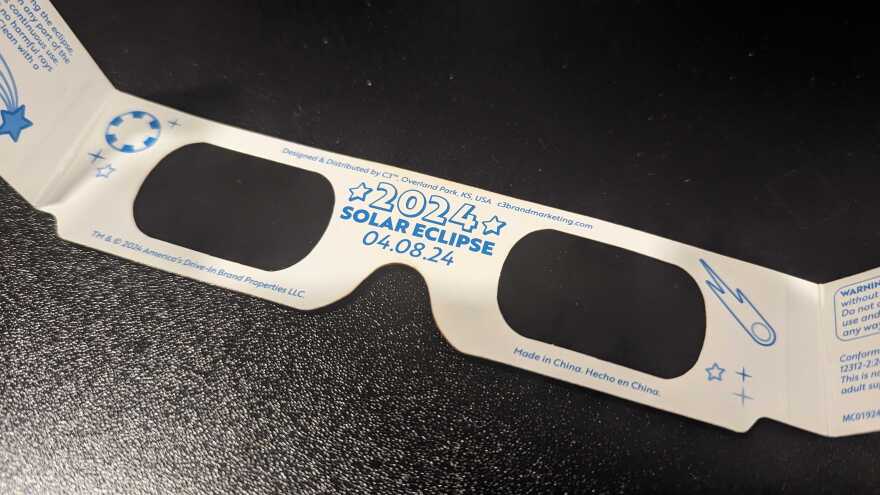BETHLEHEM, Pa. — Sky gazers, Monday will be your last chance to see a total solar eclipse in the contiguous United States or Canada until 2044.
But here in the Lehigh Valley, we’ll only experience 92% of the spectacle.
“It’ll look wonky,” Gary A. Becker, adjunct professor of astronomy at Moravian University, told us last week. “The sky won’t look dark like night. Shadows won’t be as distinct.
“If a person is driving around with no knowledge of the eclipse, they probably wouldn’t know anything was really happening.”
That jibes with what a NASA astrophysicist recently told National Public Radio — that if you want the true eclipse experience it’s “100% [totality] or nothing. There's such a radical, dramatic difference between a 99% partial and a 100% total. There's no comparison."
Even so, area folks are excited.
Some schools will dismiss early, and there have been specialty food items prepared just for the eclipse (we tasted several. They were delicious).
The eclipse will be the first visible in the Lehigh Valley since Aug. 21, 2017, when 75% of the sun was covered by the moon.
In the Lehigh Valley, 92% of the sun will be obscured by the moon. It will begin at 2:08 p.m. and last until 4:35 p.m., with the maximum viewing time at 3:24 p.m.
Here are a few final things to know as we count down to the event that has been dominating the public consciousness:
A mostly sunny day
The National Weather Service is forecasting a warm and sunny day, with afternoon highs in the low 60s across the region.
But did you know — forecasters say temperatures might actually cool by 10 degrees or more in the afternoon with the loss of solar radiation during the peak of the eclipse.
Early Monday, the weather service said it would be "a close call whether or not portions of the region will have an unobstructed view of the eclipse. The takeaway from this is that around the time of totality, the greatest potential for cloud coverage will be north and west of the I-95 corridor, with lesser chances south and east. Even so, it is very possible that we will have enough breaks in the clouds to still enjoy the eclipse across the region, but certainly not a guarantee."
It's officially #SolarEclipse day! Here's the latest cloud forecast from 12-5pm (higher % means more clouds). Increasing clouds this afternoon; more clouds N&W of Philly and the I-95 corridor with the least amount of clouds expected S&E. Some breaks in the clouds are possible! pic.twitter.com/cMjrLCCHpO
— NWS Mount Holly (@NWS_MountHolly) April 8, 2024
When the sun's gone, so is solar — briefly
According to the U.S. Energy Information Administration, solar power accounted for nearly 6% of the electricity generated in the United States last year.
While Pennsylvania has lagged in renewable energy growth, it saw nearly 70,000 solar installations in 2023.
Much of the energy produced with solar is during the middle of the day, during the same hours the eclipse will pass over the United States.
But we needn’t worry. Grid managers recently told the New York Times they’re prepared to handle a sharp drop in the energy produced by solar panels as the eclipse darkens the sky.
If you’re hitting the road, pack your patience
In advance of the eclipse, there’s been endless preparation by an alphabet soup of departments across the state.
The Pennsylvania Department of Transportation (PennDOT), the Pennsylvania Emergency Management Agency (PEMA), the Pennsylvania State Police (PSP), the Pennsylvania Turnpike Commission (PTC) and the Pennsylvania Department of Conservation and Natural Resources (PA DCNR) all came together to urge residents to plan if they’re traveling.
And they are.
Folks seeking the thrill of totality are leaving the Lehigh Valley to experience it, including many heading for the most western part of the state. That includes Gov. Josh Shapiro.
If you’re among the crowd, be prepared for traffic jams, busy gas stations, rest stops and more. And don’t say we didn’t warn you.
Wear your eclipse glasses, or else
Retailers such as Walmart, Lowe's, Home Depot and Sheetz are selling eclipse glasses, though supplies are limited.
Despite abundant media coverage warning of eye damage during the 2017 solar eclipse, not everyone used appropriate eyewear to view it.
Experts said damage became apparent to some people after a couple of hours. Others woke up the next day to spots of extreme fuzziness in the center of their field of vision.
The New York Eye and Ear Infirmary of Mount Sinai reportedly had a case where doctors found a permanent, crescent-shaped wound on the retina of a woman’s eye.
Wear your eclipse glasses, friends, even if they make you look silly. Just make sure they meet safety standards.


